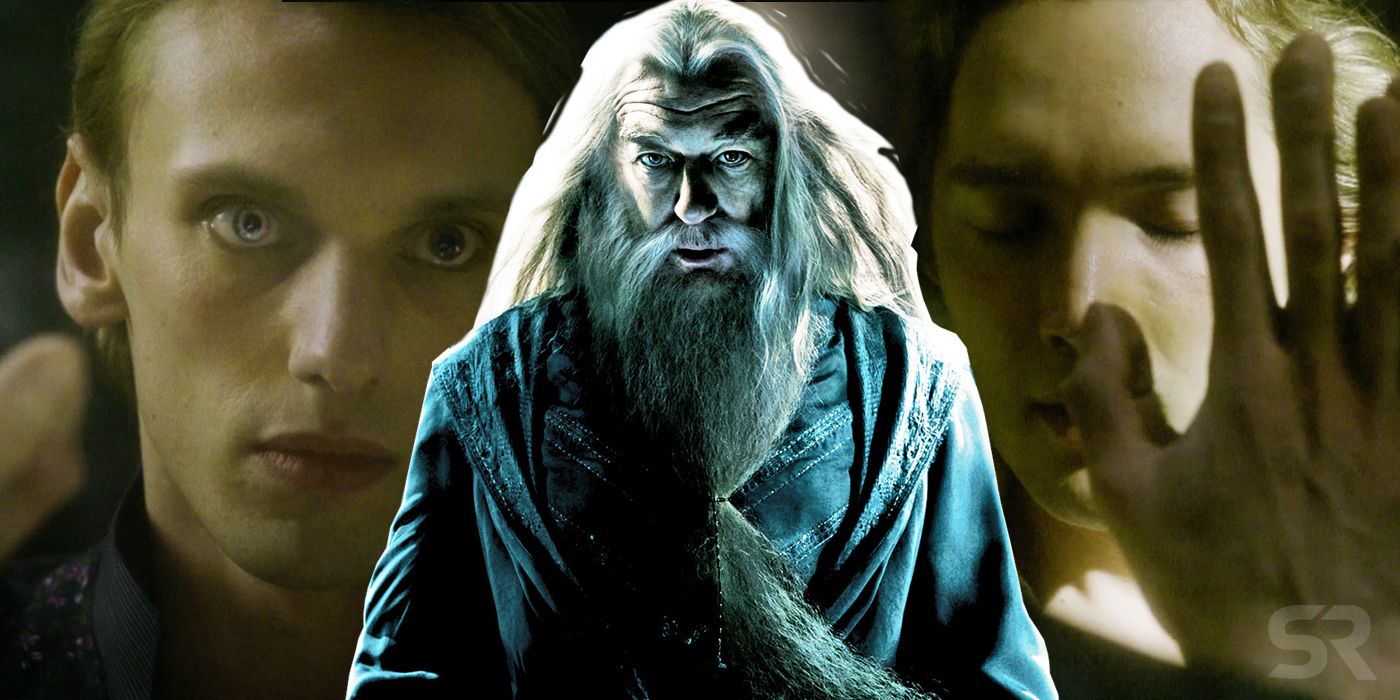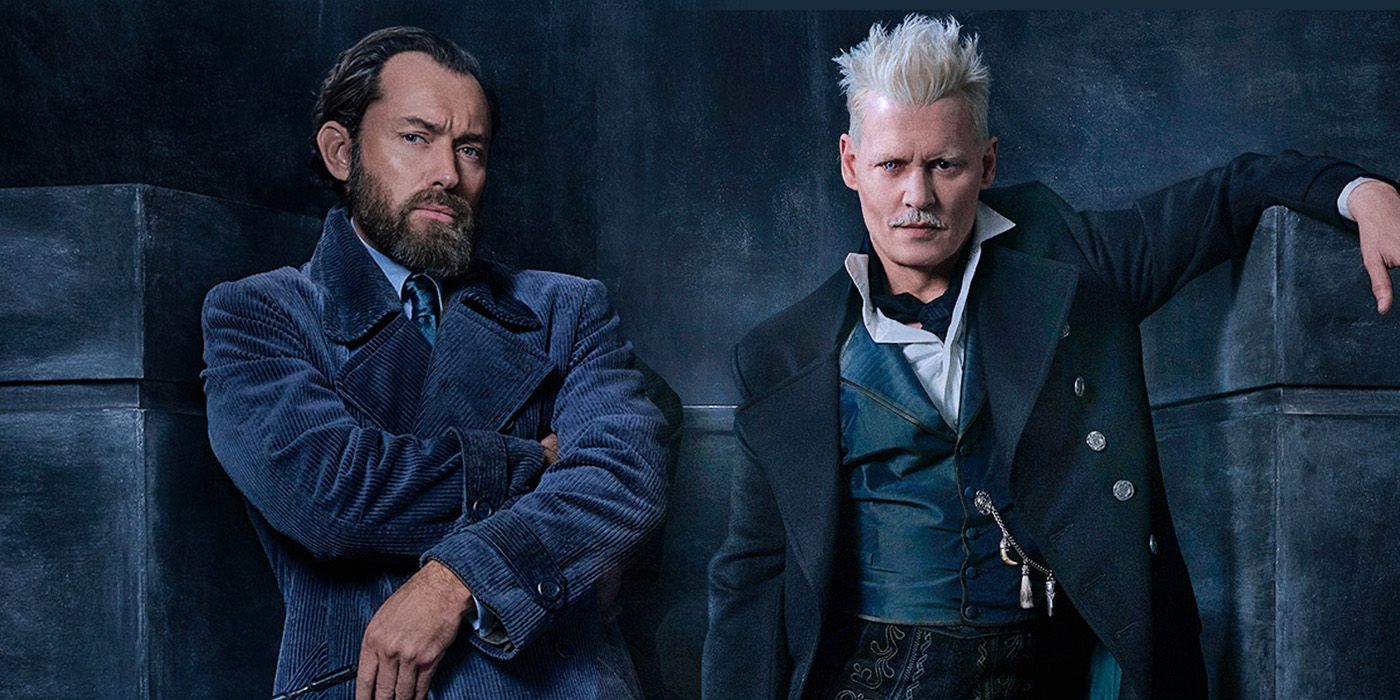
SPOILERS for Fantastic Beasts: The Crimes of Grindelwald ahead.
Dumbledore and Grindelwald's blood pact in the Fantastic Beasts movies can explain one of the biggest unanswered questions in the Harry Potter books. There were a lot of retcons to the original movie series in The Crimes of Grindelwald, although one that's got fans most hot under the cloak is the "blood troth", a magical oath between Albus and Gellert that the pair would never fight each other.
In the Harry Potter timeline, Grindelwald was a dark wizard precursor to Voldemort who terrorized Europe in the early-to-mid 20th Century, eventually beaten by Dumbledore in a legendary duel in 1945. This was the end of a multi-decade long battle between the pair, old friends who aimed to hunt down the Deathly Hallows but eventually drifted apart. That rift was solidified when Dumbledore's sister Ariana died in a three-way duel between himself, brother Aberforth and Grindelwald, with it unclear whose reflected blast killed her.
Related: Fantastic Beasts 2's Biggest Harry Potter Retcons (And Plot Holes)
The blood troth, at first, appears to be a way for Fantastic Beasts to explain why Dumbledore held back from confronting Grindelwald for so long. The first two movies in the prequel series are set in 1926 and 1927 respectively, almost 20 years before he eventually stops Gellert. Having a magical enchantment is an easy plot device to keep them apart and, as The Crimes of Grindelwald showed, a good way to keep original protagonist Newt Scamander at the center of the adventure (as well as explaining why Credence aka Aurelius Dumbledore is so important). However, the blood pact may also serve as a way to explain Ariana's death.

Very little is known about the specific magic used in the agreement, beyond that its intention is to stop Dumbledore and Grindelwald from fighting. Some have assumed it operates similarly to the Unbreakable Vow as seen in The Half-Blood Prince, where failure to follow the agreement leads to immediate death. Given the different process, though, it's possible that the troth is more about the act of combat and protecting one from killing another. In this context, that would mean Dumbledore and Grindelwald could enter into a fight, but neither would be able to land a blow.
Put in the context of what's known about Ariana's death, the fateful duel could have been a result of such a hex. It was started by Aberforth trying to stop Grindelwald's plans for Muggle dominance, with the other two participants unwilling and not initially combative. When they were pulled into the fight, things went wrong. Was the pact broken here and Ariana was caught in the crossfire? That would maintain the inate tragedy of the event, while added an extra layer of regret on Albus' part that helps him realize the darkness of his friend.
This may actually be the only explanation, given the timing of the blood pact. By the ages of young Dumbledore and Grindelwald when they appear in the Mirror of Erised, the spell was cast around the point that Ariana died. While they could have made it afterward out of remorse, it makes considerably more sense as a sad sign of a former friendship.
Related: All The Fantastic Beasts 3 Plot Clues In The Crimes of Grindelwald
Whatever the truth, it's clear that the blood pact between Dumbledore and Grindelwald is going to be very important in Fantastic Beasts' future, with it serving as the prime motivation for the pair's use of pawns Newt and Credence respectively, as well as likely being the movies' most overt presentation of the duo's romantic relationship.
Next: Fantastic Beasts: Explaining The Harry Potter Canon Plot Holes
from ScreenRant - Feed https://ift.tt/2QyWzT9
via IFTTT








0 comments:
Post a Comment